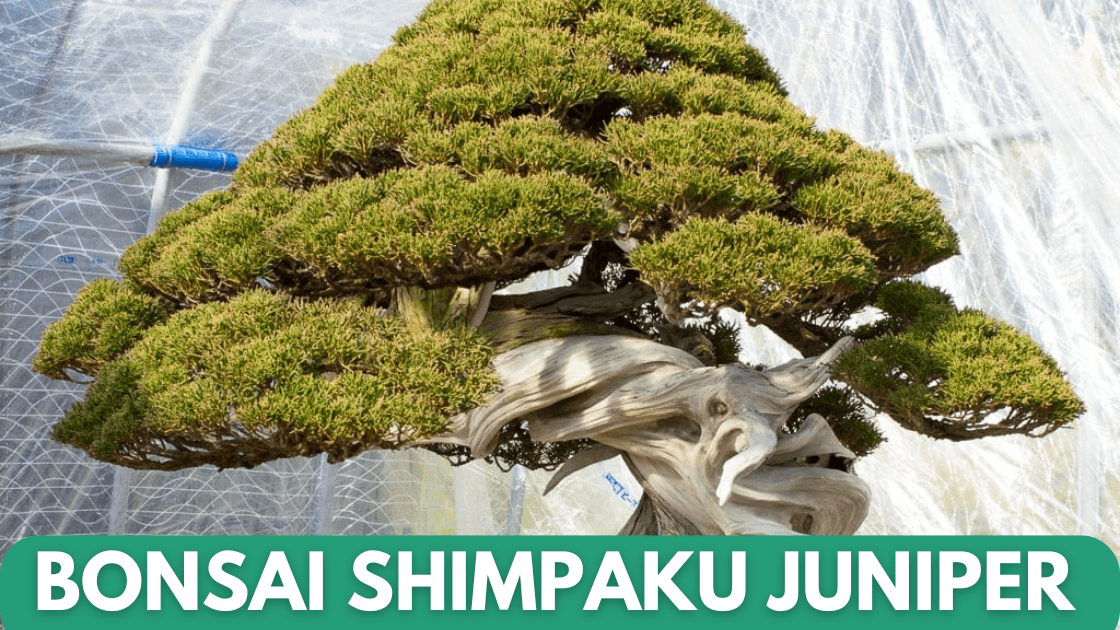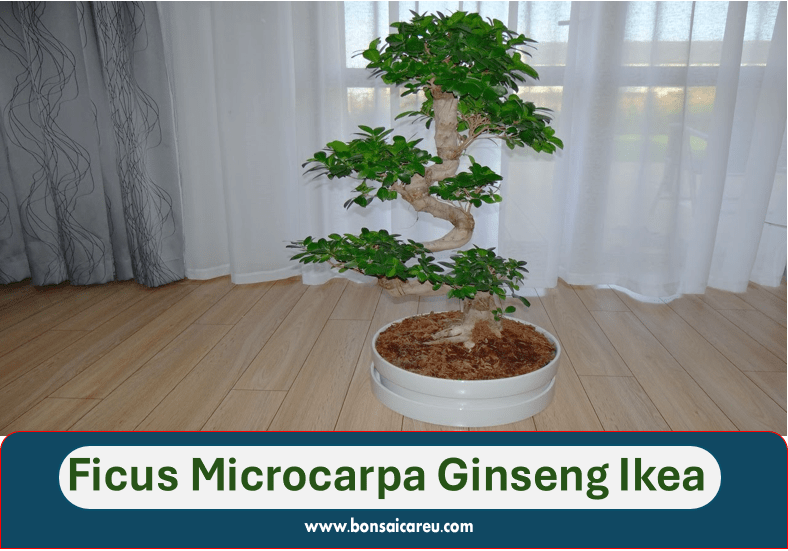Popular Bonsai Shimpaku Juniper is a popular choice for bonsai enthusiasts due to its elegant appearance and ease of care. Its compact size and attractive foliage make it a versatile and visually appealing addition to any indoor or outdoor space.
With proper pruning and maintenance, the Shimpaku Juniper can thrive for many years, making it a rewarding choice for both beginners and experienced bonsai growers. Whether you’re looking to enhance your home decor or simply enjoy the art of bonsai cultivation, the Bonsai Shimpaku Juniper is a captivating and low-maintenance option that brings natural beauty into your surroundings.

Popular Bonsai Shimpaku Juniper
In the world of bonsai, the Shimpaku Juniper stands as a true icon. Its unique beauty and symbolism have made it a favorite among enthusiasts. In this article, we will explore the essence of the Bonsai Shimpaku Juniper, delving into its symbolism and historical roots.
Symbolism And Significance
The Bonsai Shimpaku Juniper holds deep symbolism in Japanese culture. It represents strength, resilience, and longevity. The twisted trunk and delicate foliage of this bonsai symbolize the ups and downs of life, reminding us to stay strong and adaptable in the face of challenges.
Furthermore, the evergreen nature of the Shimpaku Juniper symbolizes eternal life and immortality. It serves as a reminder to appreciate the present moment and embrace the beauty of nature.
Historical Roots
The history of the Bonsai Shimpaku Juniper can be traced back to ancient China, where the art of bonsai originated. Over time, it found its way to Japan, gaining immense popularity and becoming an integral part of Japanese culture.
The Shimpaku Juniper, with its elegant appearance and ability to thrive in various climates, captured the attention of bonsai artists and enthusiasts. Its distinct characteristics, such as its compact growth habit and fine branching, make it an ideal choice for creating bonsai masterpieces.
Throughout history, the Bonsai Shimpaku Juniper has been cherished and passed down from generation to generation. Its timeless beauty inspires bonsai artists worldwide, making it a beloved symbol of Japanese art and culture.
Whether you are a bonsai enthusiast or appreciate the beauty of nature, the Bonsai Shimpaku Juniper holds a special place in the bonsai world. Its symbolism and historical significance make it a captivating choice for any bonsai collection.
Selecting Your Shimpaku
When selecting your Shimpaku bonsai, consider its shape, health, and overall aesthetic appeal. Look for well-proportioned branches and vibrant green foliage to ensure a thriving Bonsai Shimpaku Juniper. Prioritize a tree that resonates with your taste and Bonsai’s vision.
Regarding bonsai, the Shimpaku Juniper is a popular choice due to its stunning foliage and impressive age. However, selecting the right Shimpaku can be daunting, especially for beginners. This section will discuss how to identify quality specimens and where to purchase them.
Identifying Quality Specimens
To ensure you choose a healthy and long-lasting Shimpaku, here are some key factors to look for:
- Trunk: The trunk should be thick and straight, with visible tapering towards the top.
- Foliage: The foliage should be dense and evenly distributed, with no yellowing or brown spots.
- Branching: The branches should be well-spaced and evenly distributed, with no crossing or rubbing.
- Nebari: The nebari, or root flare, should be visible and spread out evenly around the base of the trunk.
By selecting a Shimpaku with these characteristics, you can ensure a strong and healthy bonsai for years.
Where To Purchase
There are several options for purchasing a Shimpaku Juniper, including online nurseries, local nurseries, and bonsai specialty shops. When choosing where to buy, consider the following:
- Reputation: Look for a reputable seller with positive reviews and a track record of quality bonsai.
- Selection: Choose a seller with a wide variety of Shimpaku specimens.
- Expertise: Consider purchasing from a seller with knowledgeable staff who can answer your questions and provide guidance on care.
By selecting a quality Shimpaku from a reputable seller, you can ensure a successful and rewarding bonsai experience.
Cultivation Techniques
The cultivation techniques for the Bonsai Shimpaku Juniper are crucial for its health and growth. Proper care ensures a thriving and beautiful bonsai plant.
Soil And Repotting
- Use well-draining soil to prevent root rot.
- Repot every 2-3 years to refresh soil nutrients.
- Choose a shallow pot to limit root growth.
Watering And Nutrition
- Water when the soil is slightly dry to the touch.
- Avoid overwatering to prevent root suffocation.
- Feed with balanced bonsai fertilizer during the growing season.
Pruning And Shaping
- Prune in early spring to maintain shape and size.
- Remove dead branches promptly to encourage new growth.
- Wire gently to guide branches into desired positions.
Design Philosophies
When it comes to designing a Bonsai Shimpaku Juniper, bonsai enthusiasts can explore various traditional and contemporary approaches. Understanding these design philosophies is crucial for creating aesthetically pleasing and harmonious compositions.
Traditional Styles
In the realm of traditional bonsai design, the Bonsai Shimpaku Juniper can be styled in classic forms such as the formal upright (Chokkan), slanting (Shakan), and cascading (Kengai). Each style embodies the principles of balance, proportion, and naturalness, reflecting the serene beauty of nature in miniature form.
Contemporary Approaches
Modern bonsai practitioners often embrace innovative techniques and styles when working with Bonsai Shimpaku Junipers. This can include experimenting with unconventional shapes, abstract forms, and asymmetrical compositions while still adhering to the fundamental principles of bonsai design.
Common Challenges
Growing and maintaining a Bonsai Shimpaku Juniper can be a rewarding experience, but it also comes with its fair share of challenges. In this section, we will explore some of the common challenges that bonsai enthusiasts may face when caring for this particular species.
Pest Control
Pests can pose a threat to the health and vitality of your Bonsai Shimpaku Juniper. Common pests that may infest these trees include aphids, spider mites, and scale insects. To effectively control these pests:
- Regularly inspect your bonsai tree for any signs of pest infestation.
- If you spot any pests, isolate the affected tree to prevent the infestation from spreading to other bonsai plants.
- Consider using natural remedies such as neem oil or insecticidal soap to eliminate the pests.
- Ensure proper hygiene by regularly cleaning and sanitizing your tools to prevent the transmission of pests.
Disease Prevention
Preventing diseases is essential to ensure the longevity of your Bonsai Shimpaku Juniper. Here are some steps you can take to minimize the risk of diseases:
- Provide adequate air circulation by spacing your bonsai trees appropriately.
- Avoid over-watering, as excessive moisture can lead to root rot and fungal infections.
- Regularly prune your bonsai to maintain its shape and remove any dead or diseased branches.
- Apply a balanced fertilizer to promote the tree’s overall health and resilience.
Adapting To Climate
Bonsai Shimpaku Junipers are naturally resilient and can adapt to various climates. However, extreme temperatures and environmental conditions can still pose challenges. To help your bonsai tree adapt to its climate:
- Research the specific climate requirements of your Juniper variety.
- Provide appropriate protection during extreme weather conditions, such as frost or heatwaves.
- Use shade cloth or windbreaks to shield your bonsai from excessive sun or strong winds.
- Monitor the soil’s moisture levels, as extreme temperatures can affect the tree’s water needs.
Fostering Tranquility
Enhance your space with the serene beauty of Bonsai Shimpaku Juniper. With its elegant form and peaceful presence, it cultivates tranquility. It is a perfect addition to create a calming atmosphere in any setting.
Bonsai In Meditation
Bonsai Shimpaku Juniper is a perfect companion for meditation, creating a serene atmosphere that fosters tranquility.
Its delicate beauty and calming presence make it an ideal focal point for quiet reflection and mindfulness practice.
Integrating Into Living Spaces
Bringing a Bonsai Shimpaku Juniper into your living space can transform the ambiance, infusing it with a sense of peace and balance.
Placing this exquisite bonsai in your living area adds a touch of nature, enhancing the overall harmony of the environment.
Frequently Asked Questions
How To Care For Shimpaku Juniper Bonsai?
Place your shimpaku juniper bonsai in a sunny spot, water when the topsoil feels dry, and fertilize during the growing season. Prune in spring to maintain its shape and repot every 2-3 years. Please protect it from freezing temperatures and pests.
When To Prune Shimpaku Juniper?
Prune shimpaku juniper in early spring or late winter before new growth emerges.
What Is The Growth Rate Of Shimpaku?
Shimpaku’s growth rate is moderate, typically around 4 to 6 inches per year. This slow and steady growth makes it ideal for bonsai cultivation.
When To Wire Shimpaku Juniper Bonsai?
Wire shimpaku juniper bonsai in early to mid-spring for best results. Avoid summer when sap flow is high.
What Is The Ideal Light Condition For Shimpaku Juniper Bonsai?
Shimpaku Juniper bonsai thrives in bright, indirect sunlight for optimal growth and health.
How Often Should I Water My Shimpaku Juniper Bonsai Tree?
Water your Shimpaku Juniper bonsai when the topsoil feels slightly dry.
Conclusion
After reading this article, it is evident that the Bonsai Shimpaku Juniper is a unique and beautiful plant that requires dedication and patience to cultivate. From its elegant and intricate foliage to its resilience in different weather conditions, this bonsai tree is a worthwhile addition to any garden or indoor space.
With proper care and attention, it can thrive for decades, becoming a cherished part of your life. So why not give it a try and experience the joy of nurturing your own Bonsai Shimpaku Juniper?


